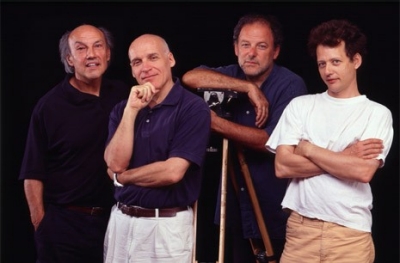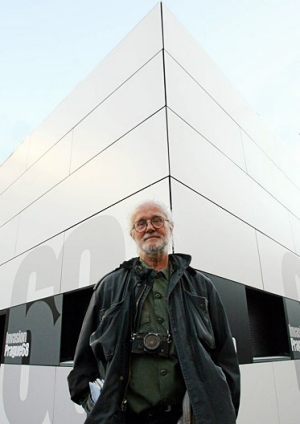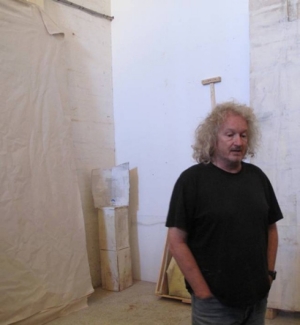Born in Melbourne to a family of diverse origins, aged four his family moved to the United States of America, to California, first to Santa Monica where the Carrolls lived a simple life, and then to Los Angeles, where he frequented the Art Center College and earned his living teaching and illustrating. During this time he created his first autonomous works with recovered material, which were often overlaid with used canvases of other students and repainted, elements which will contribute to form the hallmark of his works. In 1984 he abandoned the West Coast to transfer to New York; here he entered into contact with the local artistic circle and with the art galleries, even managing to have his first personal work in 1988. His works become internationally known at the end of the 1980s when Harald Szeeman chose him together with eight other young American artists as representatives of the new generation in the famous Hamburg “Einleuchten” show, while in 1992 he was invited to participate in “Documenta IX”. Today he lives and works in the US and Italy, where he teaches at the IUAV in Venice. Carroll’s starting points are easel painting and environment art, and the experiences of artists such as Rauschenberg, Rothko, Johns and Beuys, but also the chromatic selection and essentiality of Morandi, to which Carroll adds a thoughtful interpretation of the processes and materials of Arte Povera.
This re-elaboration gives rise to a strong poetry of recovery, led within the terms of a discourse that is far from any sort of magniloquence or theatricality. That objects can have a second life – pieces of wood of various sizes, rags of material, shoes, paper, newspaper cuttings, natural vegetables or dust that gathers on the ground – all these are put back into play and form part of the new creations. These works need a long period of gestation, that are often documented by photographs or sketches, in which the work grows and takes form slowly on itself, layer by layer building up like a painting or object programme, drawing into itself as a magnet, a power of attraction towards external elements. The artist intervenes many times on every part of the work, with a carefulness that is a discrete nurturing, discipline rather than meticulous, and where the factors of growth, slowness, and happy solitary meditation play a fundamental role.
For this occasion he also wrote the following poem:
We need to build bridges
Not just the catholic church but all churches, this pavilion is a bridge.
Bridges connect
Bridges bring hope
Bridges allow us to connect to others
Bridges allow conversation
And questions and dialog
And bridges bring compassion.
We cannot live on islands
Isolated , and spend our lives building walls , we must look around ourselves
And look outside the comforts of our own lives and beliefs.
We must open the doors for conversation,
We must unfold to each other
Share our differences
Erase cynicism and allow into our lives differences !
This is what my paintings are about. An awareness of a profoundly human vulnerability and The need for bridges.
A desire for hope, and that everything has a life and this life can unfold into the hands of another, in another way another time and another place.
Lawrence Carroll.
Rome 2013



